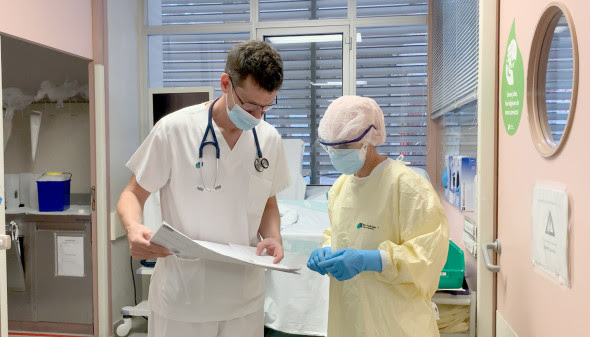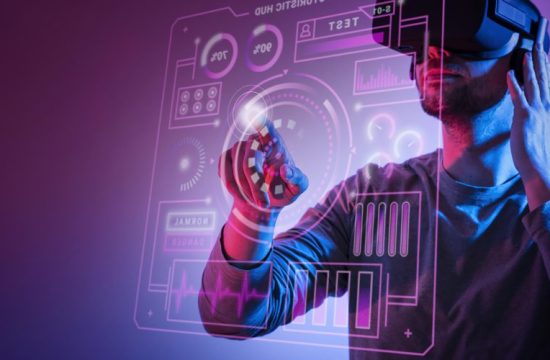
VASCOVID, A new European project, will develop a platform that uses near-infrared light to monitor microvascular health of COVID-19 patients and assist clinicians in delivering customized treatments.
Selected as one of the 23 projects from the EU emergency call, the project will build a non-invasive, portable, real-time, low-cost and wirelessdevice to be used in intensive care units (ICU).
The platform has a wide range of applications in the ICU such as when managing sepsis and acute respiratory distress syndrome patients.
As COVID-19 spread worldwide in early 2020, the avalanche of patients requiring admission into intensive care units (ICUs) suddenly became overwhelming to the healthcare systems. About 10% of hospitalized COVID-19 patients entered these ICUs in the first wave, and most of them required invasive mechanical ventilation (IMV) due to respiratory failure.
Of note, mortality among patients requiring this procedure was extremely high, ranging from 35 to 50%. One of the main features of the disease is the damage in the blood vessels, not only in the lungs, but also in other organs. This causes strokes, renal failure or heart injury. Such organ damage might be responsible for the evolution towards multi-organ dysfunction and, eventually, the death of the patient.
Monitoring and managing acute respiratory failure and hemodynamics, blood flow in the body, is critical in the ICU. Knowing this, and based on their consolidated experience, the team of scientists led by ICREA Prof. at ICFO Turgut Durduran believed that the technology being developed by the Medical Optics group at ICFO, in collaboration with colleagues from Politecnico di Milano (Italy) and HemoPhotonics (Spain), could be adapted and implemented to potentially improve the management of COVID-19 patients in ICUs.
VASCOVID was conceptualized based on these ideas. The aim of the project is to develop a portable, non-invasive, cost-effective and real-time platform for the monitoring of the microvascular health (the health of microvessels) of COVID-19 patients in ICUs. This would, in turn, assist clinicians in personalizing the treatments of patients.
The platform combines two bio-photonics technologies based on near-infrared light. Near-infrared light is shined through the palm of a patient, travels deep (>1 cm) into the tissue, interacts with the blood in the microvessels and obtains information about blood flow and blood oxygenation of COVID-19 patients.
The platform is expected to have a high impact on the management of COVID-19 patients at the ICUs. The platform will also be of use for a broader range of patients such as those suffering from sepsis and acute respiratory distress syndrome. The underlying goal is the personalization of the patient management based on biomarkers derived from evaluating the microvascular health and the endothelial function.
In addition to the prognostic value of the degree of endothelial impairment caused by the disease, the technology provides biomarkers to evaluate heart-lung interactions, helping clinicians to carry out personalized management of ventilation strategies in order to avoid ventilator-induced lung injury, or to screen readiness to wean from the mechanical ventilator, the final stage of the respiratory support, and that often fails due to cardiovascular insufficiency.
Coordinated by ICREA Prof. at ICFO Turgut Durduran, the consortium comprises seven partners from Europe: ICFO (Spain), Consorci Corporació Sanitària Parc Taulí de Sabadell (Spain), Politecnico di Milano (POLIMI, Italy), and the companies HemoPhotonics (Spain), BioPixs Limited (Ireland), Splendo Consulting BV (Netherlands) and Asphalion (Spain).
As ICREA Prof. at ICFO Turgut Durduran highlights, “We have been working with this technology using near infrared light for over a decade in projects related to neuro-monitoring, cancer screening and others. We were able to use our experience in these applications at hospitals worldwide to rapidly adapt to the needs of the COVID-19 management and propose this new platform. ”
“We have the challenge of completing this project in a very short-time scale, but we are certain that we will achieve this goal. We also note that COVID-19 will be stopped with the amazing advances in vaccines but this technology will be applicable to many patient groups at the ICUs as well as for our preparedness for future pandemics of this nature. Future-proofing healthcare is one important lesson we have learned from the pandemic.”
Dr. Jaume Mesquida, intensivist from the C.S. Parc Taulí de Sabadell, emphasizesthat “This is a great opportunity in the evolution of monitoring in the ICU towards non-invasive technologies. Its features, such as being wireless and portable, make it an ideal device for these types of units. We hope to use this device on the maximum number of patients possible to actually measure its effectiveness and see if the information we obtain could be translated into a parameter that helps us to make decisions”








